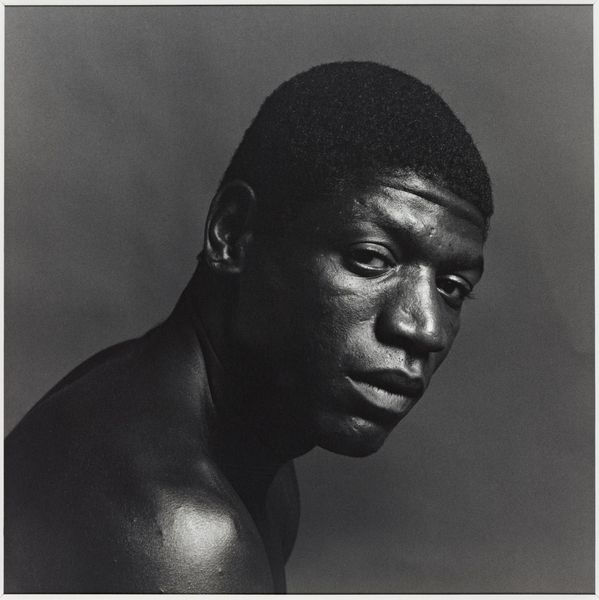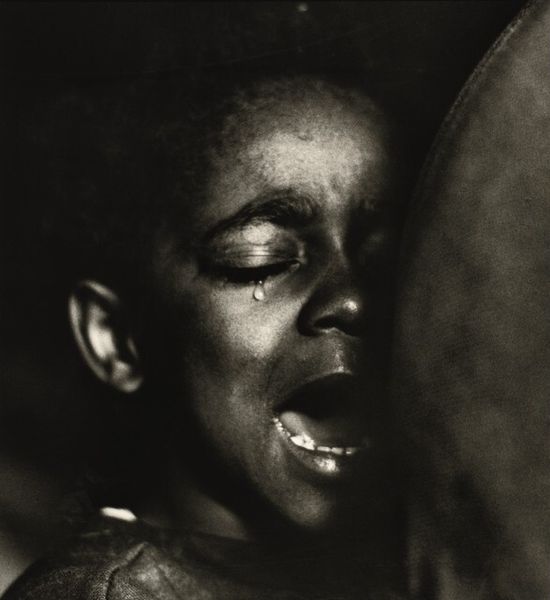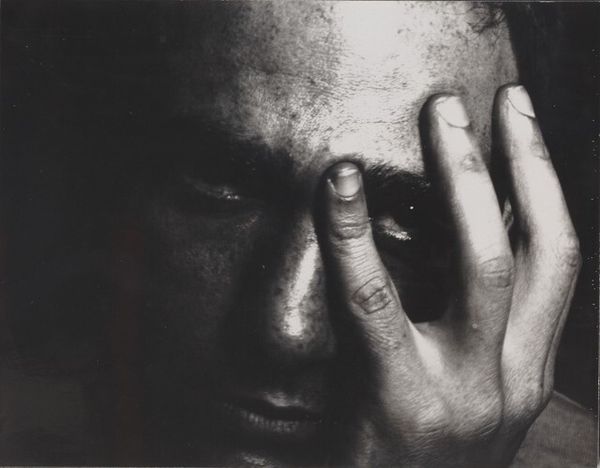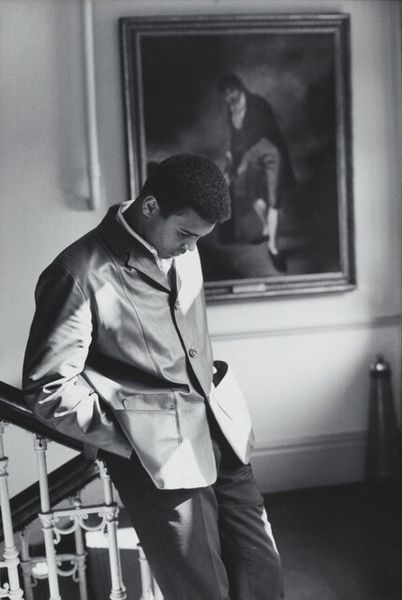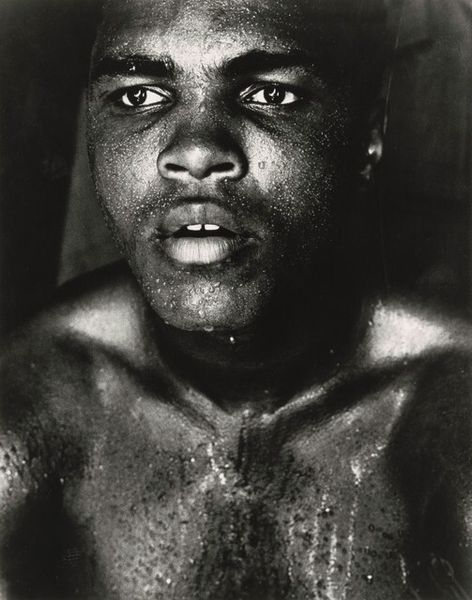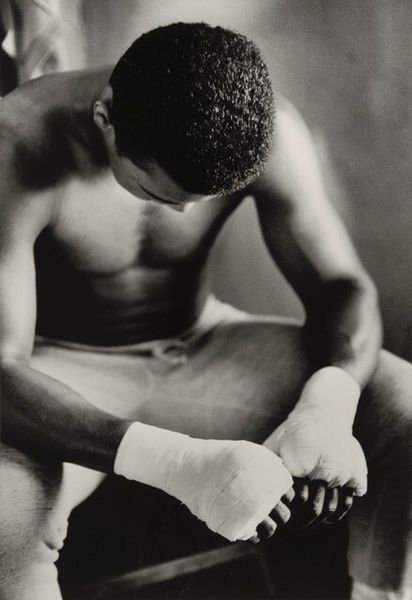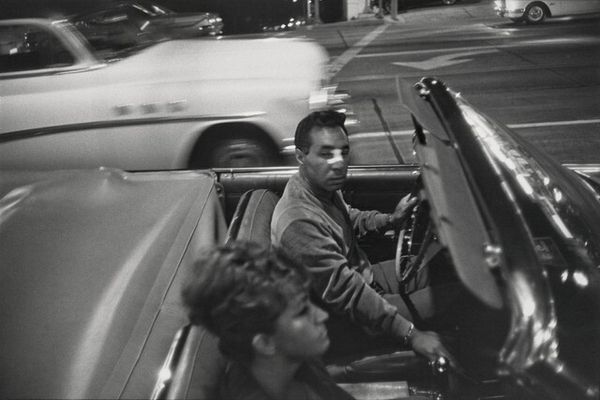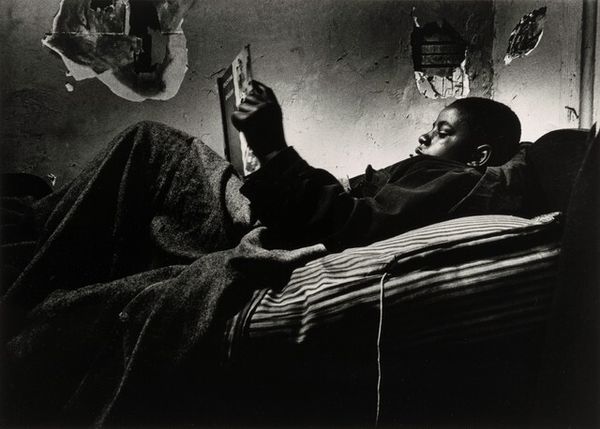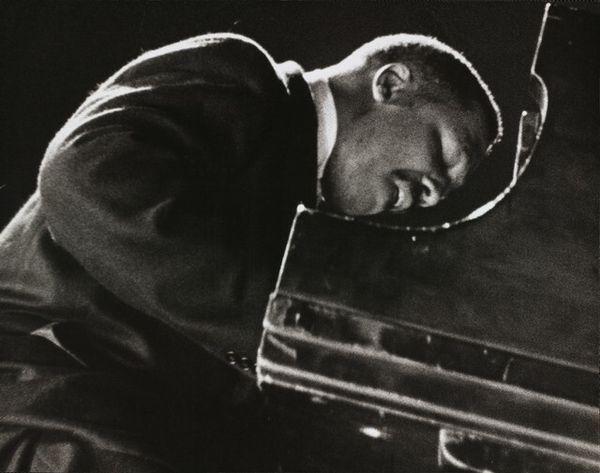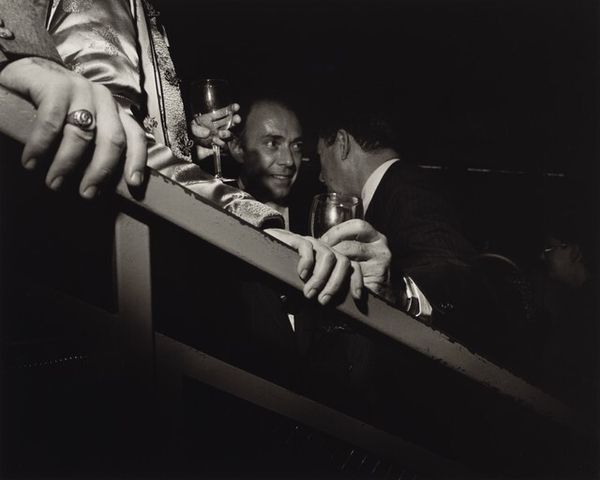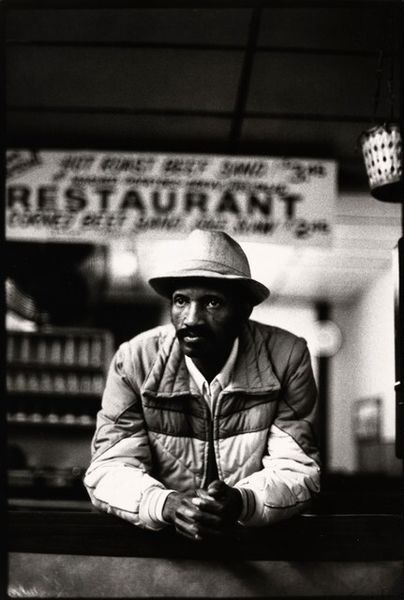
Dimensions: sheet: 41 × 50.5 cm (16 1/8 × 19 7/8 in.) image: 33.3 × 47 cm (13 1/8 × 18 1/2 in.)
Copyright: National Gallery of Art: CC0 1.0
Curator: Gordon Parks captured this powerful gelatin-silver print, "Emerging Man, Harlem, New York," in 1952. It presents a close-up portrait, arresting in its starkness. Editor: The grain, the near-claustrophobic composition... it feels heavy, deliberately weighty. Look at how the majority of the frame is dark, obscuring everything except that emerging face and what looks like tools of some kind. Curator: Indeed. Parks often used his photography as a tool for social commentary. Consider the context of 1950s Harlem. This isn't simply a portrait; it's a statement about the struggle and resilience of Black men in America. He highlights individuals to amplify universal themes. Editor: That struggle is physically manifested in the way he seems to be breaking through, or rather *is being born* into this material world, forced to literally drag himself through dirt and darkness into… what? The dim lights of the city offer little consolation, but look closer at the placement of those small metal spheres lined up in front; it's all about texture, how it catches the light. What were these man’s work? Curator: Parks was deeply influenced by social realism and the Harlem Renaissance before it. The work has those reverberations and ties into his work with the Black Arts Movement later. It reflects that era’s focus on portraying everyday life and the fight for equality. It appeared around the time the Black Star agency rejected some of his photos. Editor: Absolutely. And Parks was meticulous about process. Gelatin-silver was a popular choice for its archival qualities. Think about it – using a process meant to *preserve*, to tell a story about emerging… Curator: A striking contrast and powerful metaphor for enduring legacies amid transient moments. It encourages us to engage with the subject’s narrative and the broader socio-political context. Editor: Yes! Looking closer shows a carefully built narrative by using material in his photograph to create that experience; it almost touches me in its silent power. Curator: It leaves you considering the historical impact on identity formation, then and now.
Comments
No comments
Be the first to comment and join the conversation on the ultimate creative platform.

